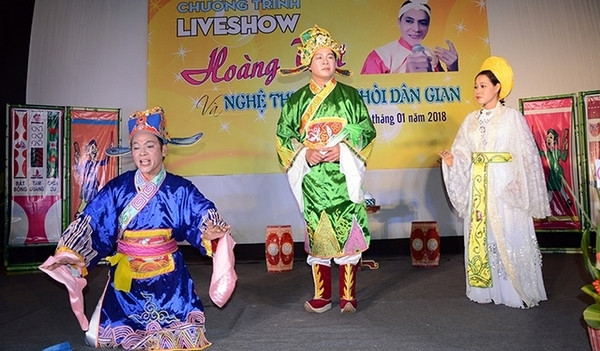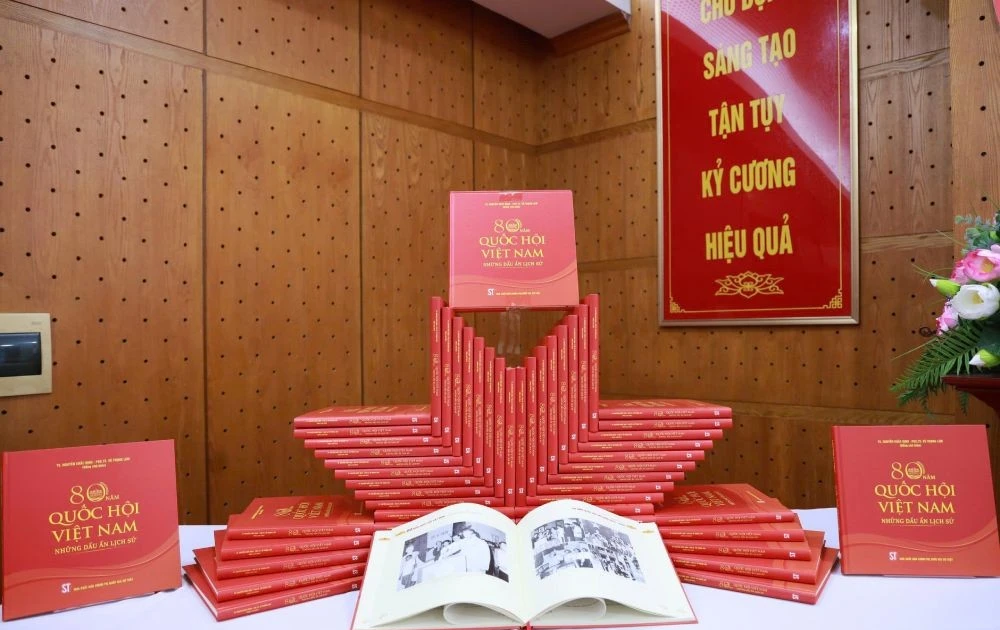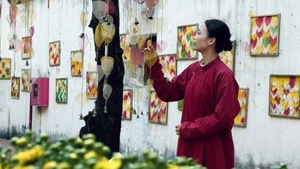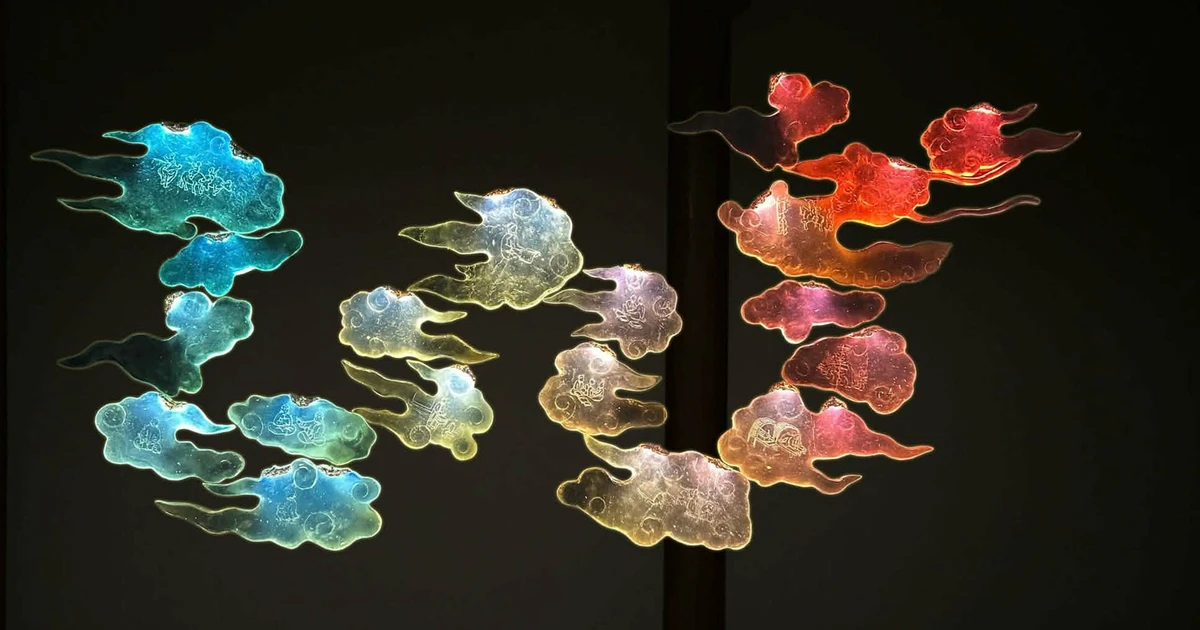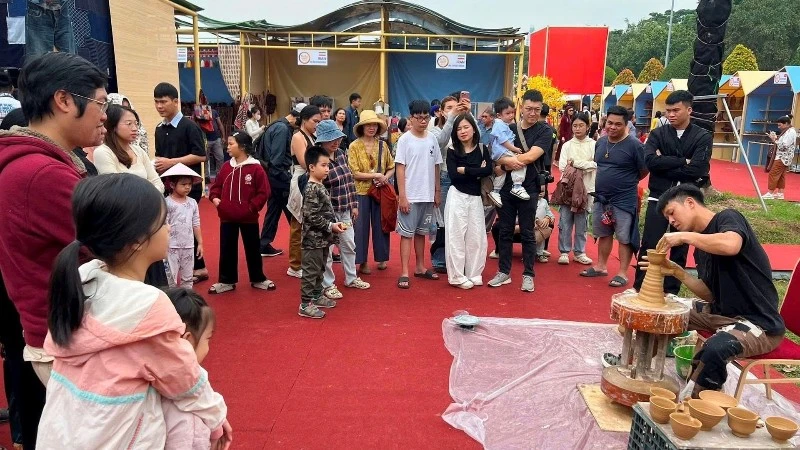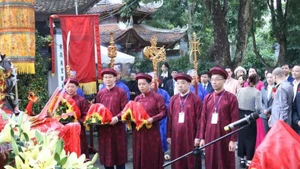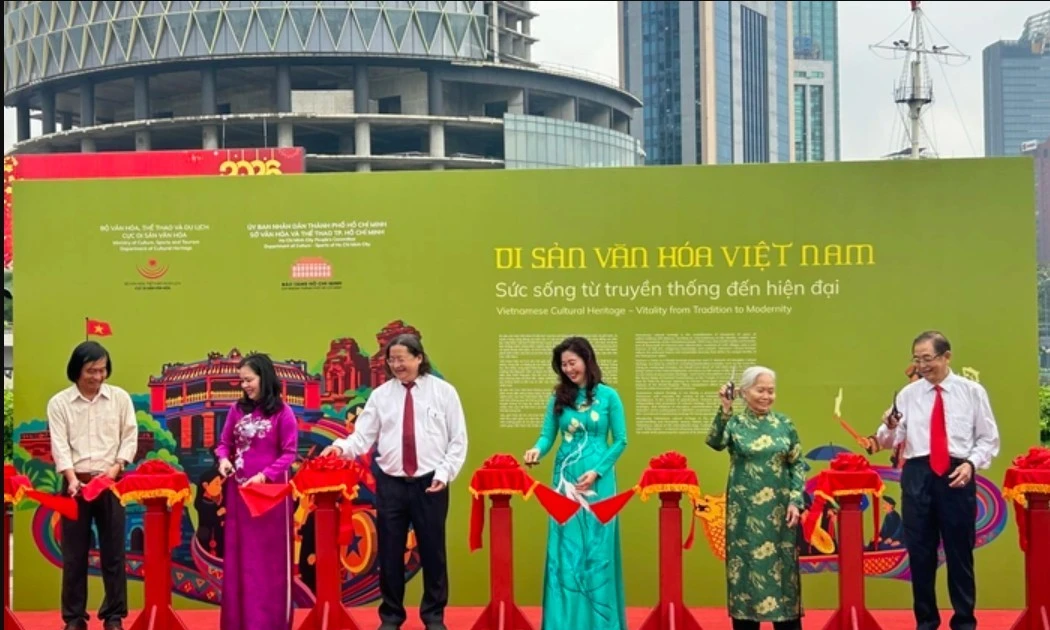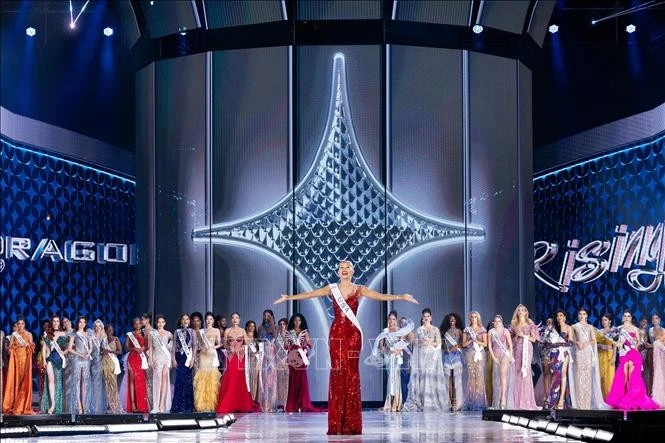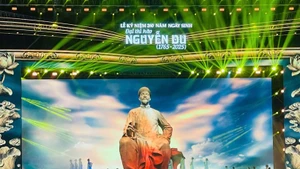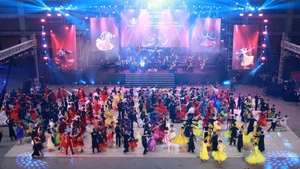The show was held by the artist Hoang Viet, who has made great contributions towards preserving and promoting the value of ‘Bai Choi’, a traditional art form popular in the central and south central regions of Vietnam, particularly in Binh Dinh province.
The artist granted an interview to the weekly publication of Nhan Dan (People) Newspaper to share about this passion with ‘Bai Choi’ singing.
Great passion
Q: Less than a month after ‘Bai Choi’ singing was recognised by UNESCO as an Intangible Cultural Heritage of Humanity, you held your impressive liveshow on this traditional art form. Did you make the preparations for it a long time ago?
A: I have nurtured the ambition of organising the liveshow for a long time to reproduce forms of ‘Bai Choi’ games (a card game played in bamboo huts under the instruction of male and female Hieu artists) and performances. After it was recognised by the UNESCO in late 2017, with the encouragement of my friends, fans and professional agencies, I decided to launch my own liveshow.
I am very passionate and proud of the national and traditional cultural treasures; so through the performance, I desired to bring ‘Bai Choi’ closer to the public, particularly art lovers.
To make ‘Bai Choi’ popular in the community
Q: From a ballet dancer, you have become an artist of many mediums, including ‘Tuong’ (classical drama), ‘Hat boi’ (classical theatre and folk singing) and ‘Bai Choi’. What makes ‘Bai Choi’ different from other traditional folk singing?
A: Experiencing six years of playing as a Hieu artist, I have had opportunities to exchange and perform jointly with many masters. I saw that this is a very unique art form imbued with national identity and similar to ‘Hat boi’. However, interestingly, ‘Bai Choi’ is a common and lively style of singing which is very familiar with the masses, particularly farmers. Therefore, it has been extremely popular amongst the community.
Q: You have spent a lot of time collecting, researching and performing ‘Bai Choi’. In your opinion, what should relevant agencies and artists do to preserve and promote this unique form of folk art?
A: I formed a ‘Bai Choi’ association in Quy Nhon city, Binh Dinh province in 2012. I was worried if audiences in an urban area, who had gotten accustomed to modern forms of entertainment, would love this style of singing. However, surprisingly, my association has gained successes since its first performance, with an enthusiastic reception from the audiences. This showed that they have not turned their backs on the traditional arts. The problem was that we have not been able to find the suitable approach to reach audiences for each art form. If we can create some standards for carefully preserving and promoting the heritages left by our ancestors, they will shine forever.
Q: Could you detail these measures?
A: In the context of technological development and market economy, traditional art forms are easily modified and contain miscellaneous features. For folk arts, particularly ‘Bai Choi’, it is crucial to preserve accurately and promote ancient elements of the singing style.
Younger generations have not had many conditions to approach the original ‘Bai Choi’ style, so it is difficult for them to grasp the essence of ‘Bai Choi’ games and performances. The older artisans in Binh Dinh also worry that if the space for games and performances are not preserved, the unique identity of ‘Bai Choi’ in the province will be gradually lost.
In addition, it is essential to care for artisans who have devoted their lives to preserve and develop ‘Bai Choi’, while expanding the clubs in certain localities. Training courses should be organised for younger generations as soon as possible.
Q: Are there any young artists, following your generation, who have strong passion and talent to pursue this art form in Binh Dinh, one of the cradles of ‘Bai Choi’?
A: What a pity! I was the oldest female Hieu artist in the ‘Bai Choi’ association in Binh Dinh, and there have not been any successors.
In the province, there is only one individual prize formed by researcher Vu Ngoc Lien to encourage and foster young talents who are interested in the ‘Hat boi’ and ‘Bai Choi’ singing.
The UNESCO recognition is not only the great honour but also take responsibility for relevant agencies and community in preserving and promoting the heritage’s values. The State should set out necessary policies to encourage young artists in the age of technological development and modern entertainment.
Thank you very much!

Artist Hoang Viet
| Artist Hoang Viet (full name of Pham Hoang Viet), was born in 1960 in An Nhon district, Binh Dinh province. He is a son of the couple of famous ‘Hat boi’ artists Hoang Chinh – Hong Thu. From a ballet dancer and a ‘Hat boi’ artist, he moved on to research and practice ‘Bai Choi’ folk music. In 2013, he and artist Minh Duc won the first prize at the first ‘Bai Choi’ folk singing festival held by Phu Yen Television. |
